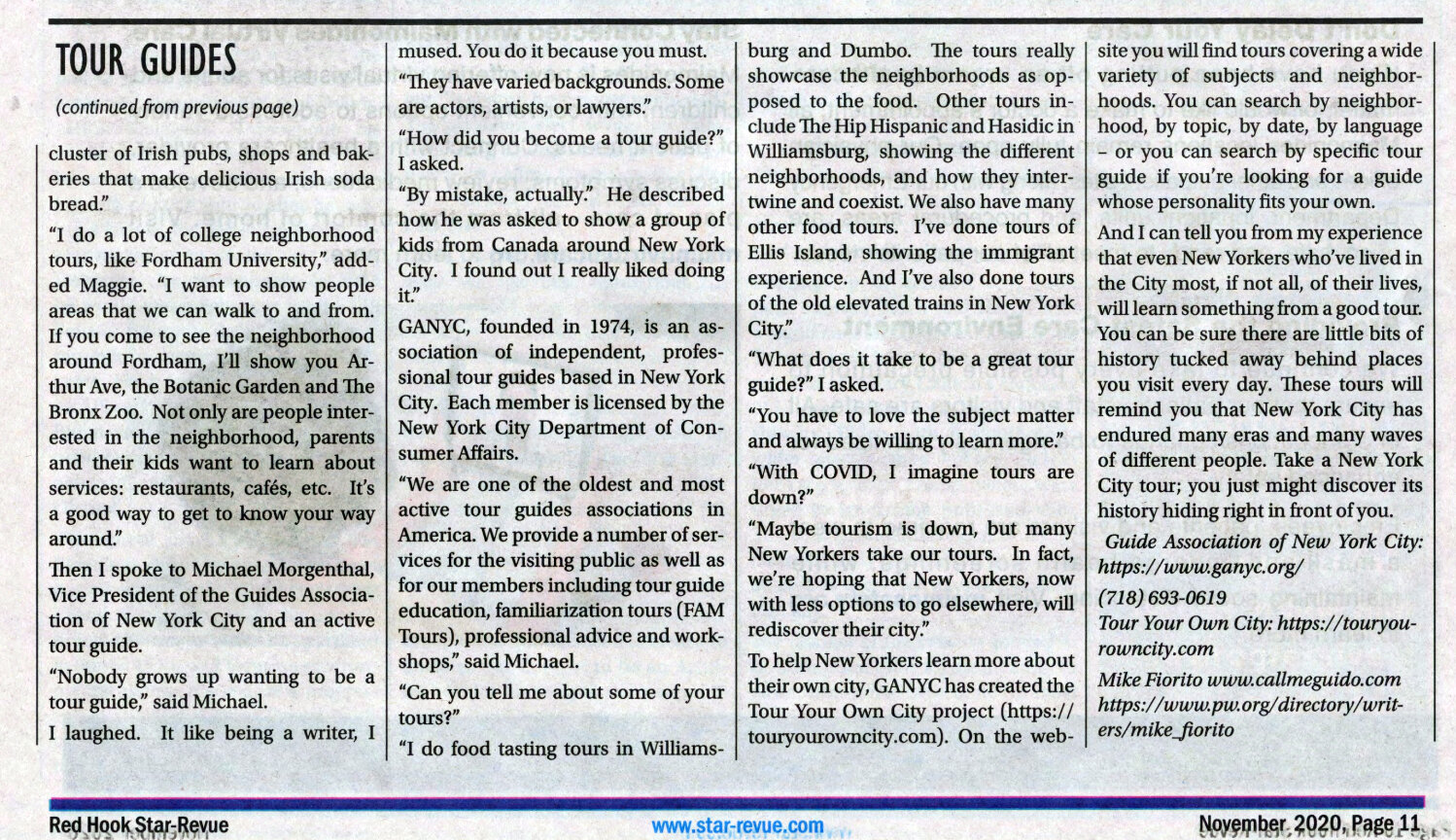Here at Custom NYC Tours, designing & leading custom-created walking tours is obviously our specialty. My bragging point is that I know all aspects of this city so well, if you can think of an idea for a tour, I can create it for you, and lead it. We’ve done fun ones recently… a historic overview of Brooklyn neighborhoods, street art with themes about gender or politics, movie & TV locations in Central Park, and more.
But my favorite type of custom requests involve helping families trace their roots back in historic parts of the city.
I had first done one of these in 2016, when I helped a man trace his childhood roots in Bensonhurst.
Earlier this year, I designed another walking tour for a woman from England who had ancestors that moved to Brooklyn in the very early 20th century. She was curious to learn about this side of her family, and what their life in America had been like. She had a few addresses of where they lived around the historic Park Slope neighborhood, and knowledge of their burial in nearby Green-Wood Cemetery. With this information, I crafted a tour of their former neighborhood (Brooklyn being so historically well-preserved, most of their homes still stood). Finally, we journeyed into the cemetery to tour this historic site, and visit her family members’ plot. Seeing how much the tour meant to her was a humbling experience for me in turn.
(As an aside, if you ever have the chance to tour Green-Wood Cemetery, it is highly recommended. Opened in 1838, it was New York’s first rural cemetery. Its tombstones and crypts are works of art in their own right, and there are monuments to the Revolutionary War, as its largest battle was fought on this site in 1776. The cemetery’s popularity as a pastoral retreat helped inspire the demand for New York’s Central Park.)
And, earlier this Autumn, I did a similar tour in historic Brooklyn, albeit with a more local group. The group— now living around the various suburbs of the region— knew that their grandparents had grown up, and started their family, in Brooklyn, and were curious to match locations to family photos and stories. Similar to the woman from England, family records provided them with specific addresses. I created the tour from there.
We visited three historic, but very distinct, Brooklyn neighborhoods. First, Williamsburg. Today, better known for its “hipster” reputation, Brooklyn grew from a 19th-century industrial hub to a thriving immigrant residential neighborhood after the opening of the Williamsburg Bridge in 1903, when many growing Jewish families moved there from the overcrowded tenements of the Manhattan’s Lower East Side. A few blocks from the bridge’s exit, we found the beautiful apartment house where their family once lived. This section also included looks at the gorgeous buildings along Broadway, once the thriving Wall Street of old Brooklyn. After WWII, even as the orthodox segment of the population grew, new immigrants from Puerto Rico and the Dominican Republic moved in, creating a rich new cultural blend in the neighborhood fabric. From there, we traveled down to Crown Heights, with its vibrant mix of orthodox Jewish population and Caribbean immigrant families. There, we saw a second home that the growing family once inhabited. Finally, we traveled past Prospect Park to visit historic Flatbush, near the “Victorian” sub-section, to see a pre-war apartment complex the family once called home. The eldest member of the group had grown up as a young girl in that building and recognized its steps and lobby. We ended by recreating an old family photo.
All together, three very different neighborhoods, all tied together by family history. In many ways, that is the story of New York.










